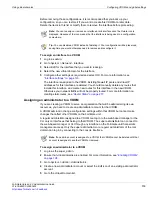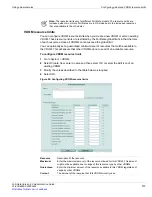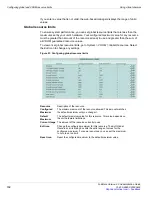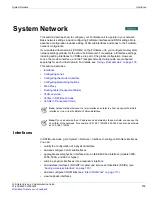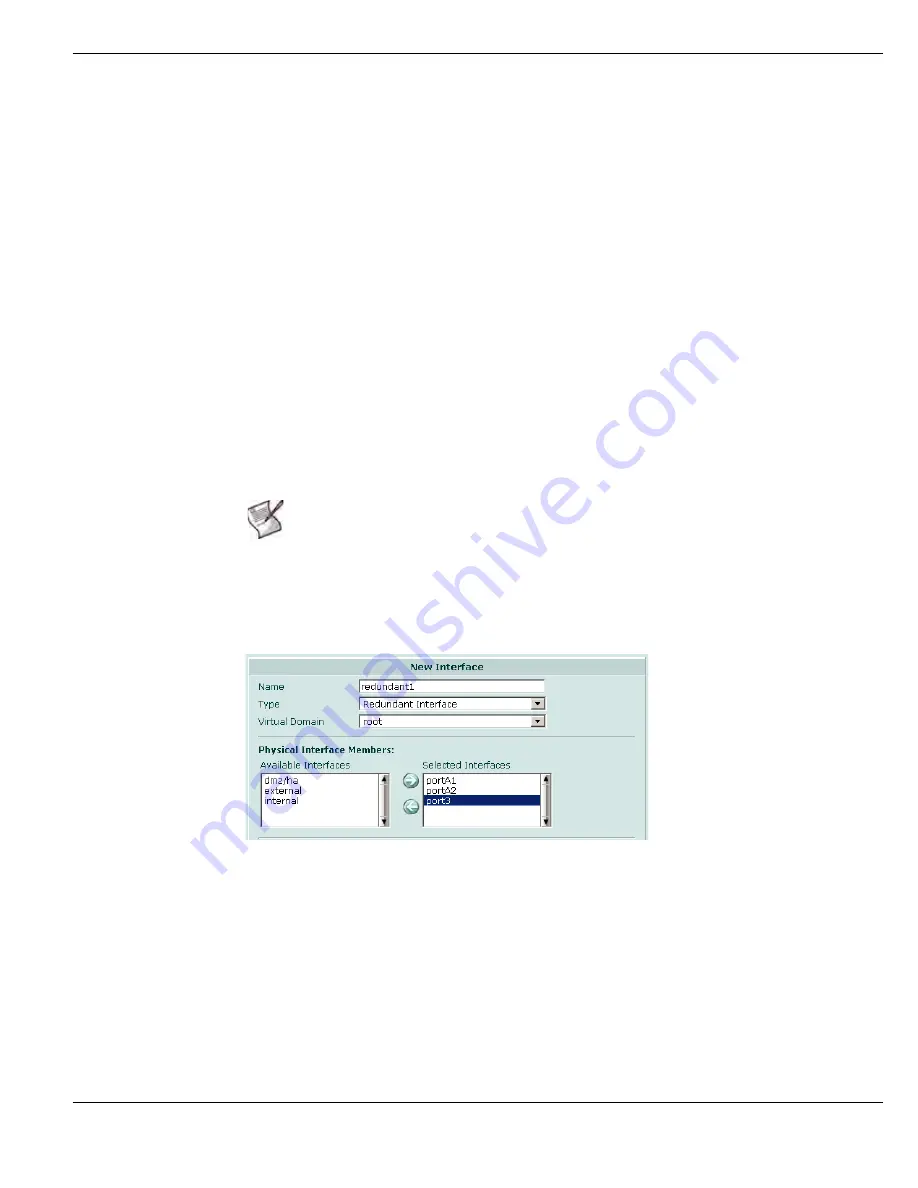
System Network
Interfaces
FortiGate Version 4.0 Administration Guide
01-400-89802-20090424
129
In a redundant interface, traffic is only going over one interface at any time. This differs
from an aggregated interface where traffic is going over all interfaces for increased
bandwidth. This difference means redundant interfaces can have more robust
configurations with fewer possible points of failure. This is important in a fully-meshed HA
configuration.
FortiGate firmware on models 300A, 310B, 400A, 500A, 620B, and models 800 and
higher implements redundant interfaces.
An interface is available to be in a redundant interface if:
•
it is a physical interface, not a VLAN interface
•
it is not already part of an aggregated or redundant interface
•
it is in the same VDOM as the redundant interface
•
it has no defined IP address and is not configured for DHCP or PPPoE
•
it has no DHCP server or relay configured on it
•
it does not have any VLAN subinterfaces
•
it is not referenced in any firewall policy, VIP, IP Pool or multicast policy
•
it is not monitored by HA
•
it is not one of the FortiGate 5000 series backplane interfaces
When an interface is included in a redundant interface, it is not listed on the
System >
Network > Interface
page. You cannot configure the interface individually and it is not
available for inclusion in firewall policies, VIPs, IP pools, or routing.
Figure 60: Settings for a redundant interface
To create a redundant interface
1
Go to
System > Network > Interface
.
2
Select
Create New
.
3
In the
Name
field, enter a name for the redundant interface.
The interface name must different from any other interface, zone or VDOM.
4
From the
Type
list, select
Redundant Interface
.
Note:
FortiGate-5000 backplane interfaces have to be made visible before they can be
added to an aggregate or a redundant interface.
Summary of Contents for Gate 60D
Page 705: ...www fortinet com...
Page 706: ...www fortinet com...

